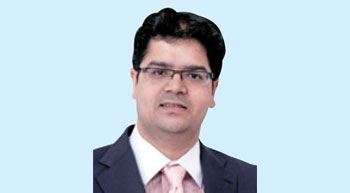Rishabh Sethi, Executive Director, SPML Infra Limited, says, despite a plethora of challenges, the tide may be turning.
How much importance is given to waste-water today in India?
Discharge of untreated sewage is the biggest cause for water pollution. The large gap between the generation of waste-water and its treatment has led to large scale ground water contamination. Operation and maintenance of existing plants and sewage pumping stations is not satisfactory. Nearly 39 per cent plants are not conforming to general standards prescribed under the Environmental (Protection) Rules for discharge into streams as per the CPCB (Central Pollution Control Board) report. The existing treatment capacity remains underutilised while a lot of sewage is discharged without treatment. There is a serious need of comprehensive and focused approach towards infrastructure development based on latest technologies for the treatment, management and reuse of waste-water.
It also needs to be financially viable for private players with clear and defined rules and guidelines.
What are the challenges in waste-water management. What are the means to address these issues?
There are number of challenges. The biggest of them all is the slow pace of implementation of policy reforms in India. But, with the business environment improving, several new initiatives aimed at water supply, waste-water and sanitation is planned by the Central Government. Old technologies, traditional methods and aging infrastructure present challenges. In the absence of a proper discharge and reuse of treated water, in most cases, the treated water is released to the sewer line thus making the whole effort useless. The replacement or retrofitting of assets poses another challenge.
Since the waste-water originates near people habitats and in the industries, treatment should be done as close as possible to the source to make it a viable business model. The decentralised treatment plants in cities are the best option to address the issues. SPML has executed the decentralised sewage treatment project in Mira Bhayander, Maharashtra, where it has created 10 decentralised sewage treatment plants and pumping stations to treat the collected sewage locally rather than transporting it to a large STP.
Other issues concerning the sector are lack of legal and regulatory framework, lack of knowledge and understanding of the concept by the authorities, access to finance to carry out the project, lack of political and economic instability, political considerations, issues with legal and environmental clearances and land acquisition. Political will and lack of trust between private and public partners delays in design approval and payments, lack of skilled manpower among others that requires careful consideration.
Are there any business opportunities in such a situation?
India´s population of 1.34 billion is set to overtake China to become the most populous country by 2025. With fast-paced urbanisation trends, India´s demand for clean water by 2030 may exceed supply by 50 per cent. It is estimated that waste-water from urban India may cross 120,000 million litres per day by the year 2050 and by that time, rural India will also generate about 50,000 million litres daily. As India is projected to become a water stressed nation by 2025, there is an urgent need for better infrastructure and management with regard to waste-water treatment and management for sustainability. As per an estimate, water and waste-water treatment market in India will reach around Rs 22,000 crore by 2018. The waste-water treatment market in India is expected to grow at a CAGR of 18-20 per cent.
What is the government´s role so far? Has the Modi Government been effective? The government has started supporting private participation (PPP) in water sector and introduced a number of regulatory reforms. The efforts of the Central Government with Swacch Bharat Abhiyan and National Clean Ganga Mission seems to have made progress in terms of creating awareness and encouraging waste-water treatment. The proposed tax breaks for industries that save water with regard to environment and towards discharge of waste-water is helping to gain importance for waste-water treatment and recycling for reuse.
How far has zero liquid discharge been achieved in the industrial sector?
Zero Liquid Discharge (ZLD) is a technological concept where the entire industrial waste-water output is reused, after appropriate treatment, without discharging a single drop into any water bodies or river. Implementation of zero liquid discharge on all type of industrial sectors is an important issue.
A few industrial units have already adopted the new technology and successfully launched the ZLD installation to resolve industrial water pollution problems and saving on fresh water. But it is yet to be adopted across the segment. It has been noticed that industries are not able to meet all time compliance standards. The modern treatment technique and processes allow profitable recycling of industrial waste-water to production processes. This would not only allow saving of valuable fresh water resources, but would also reduce contamination of rivers and open waters drastically.
What are some treatment technologies viable in India?
A single waste-water treatment technology would be inappropriate for a country like India which has different geographical and geological regions, varied climatic conditions and levels of population. It is more appropriate to address the potential by identifying appropriate solutions for different regions. The solutions depend on several factors like volume of waste-water, types of pollutants, cost, extent of water scarcity and dilution of pollution. We need to promote Decentralized Waste-water Treatment Systems (DEWATS) which are locally organised and people-driven systems.



Leave a Reply
You must be logged in to post a comment.